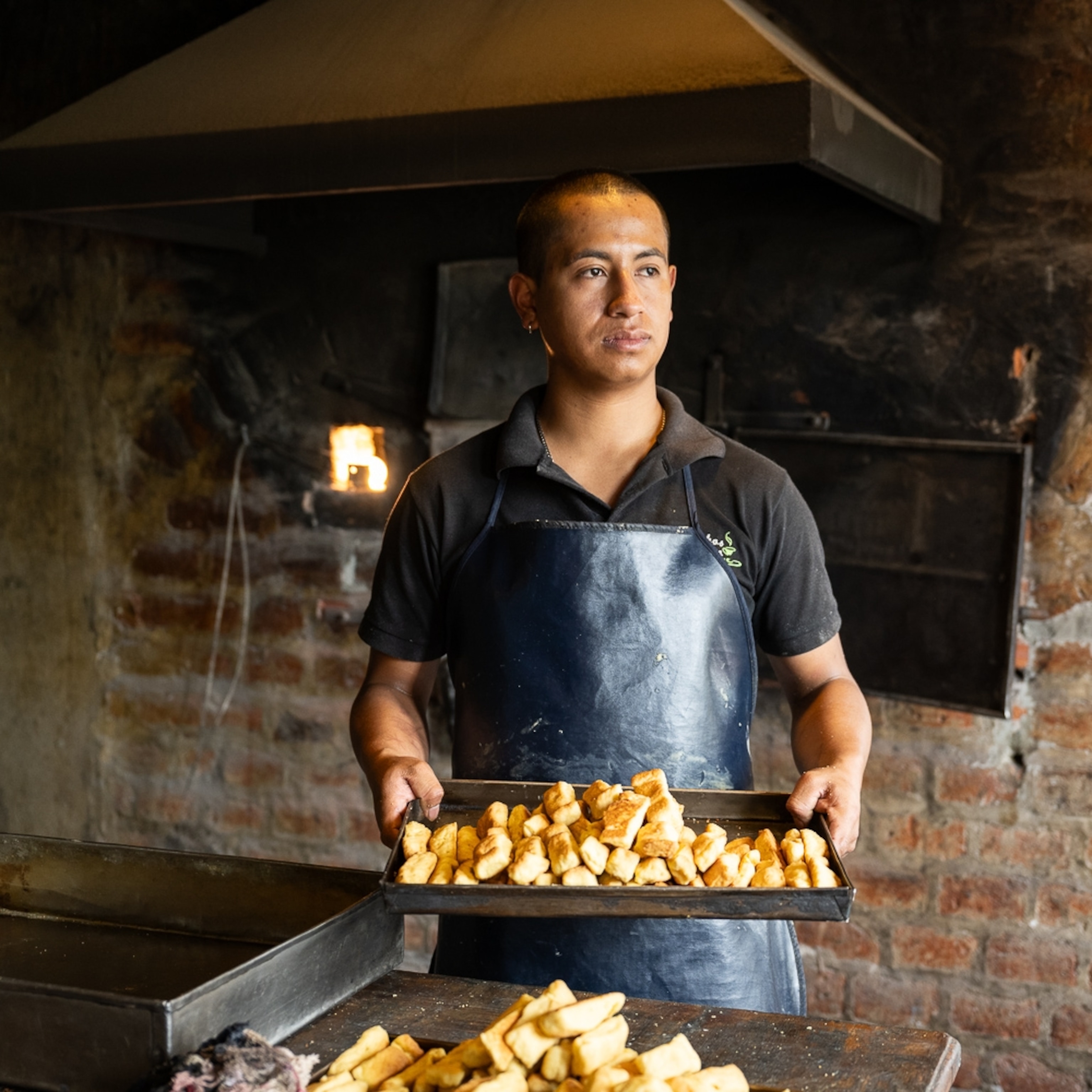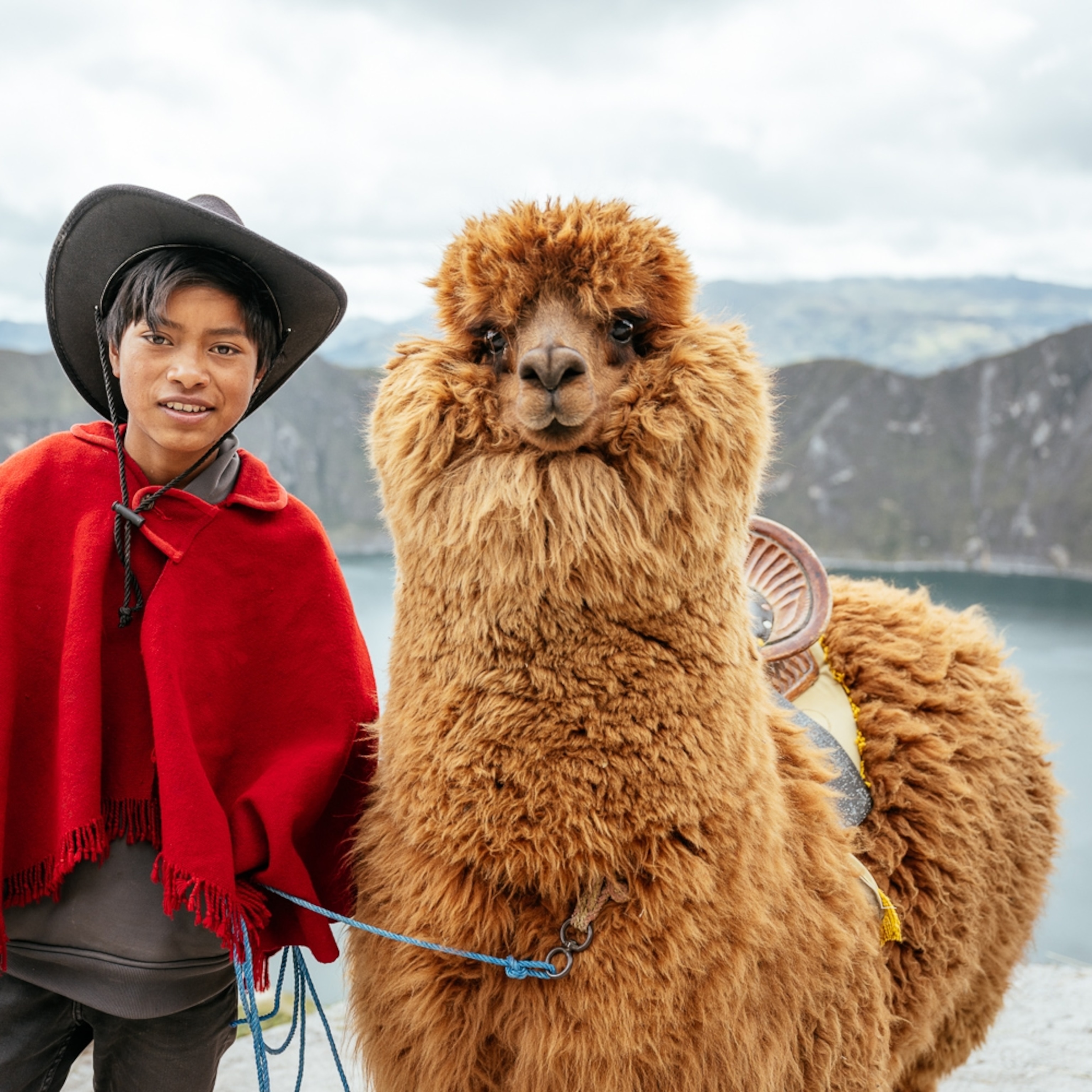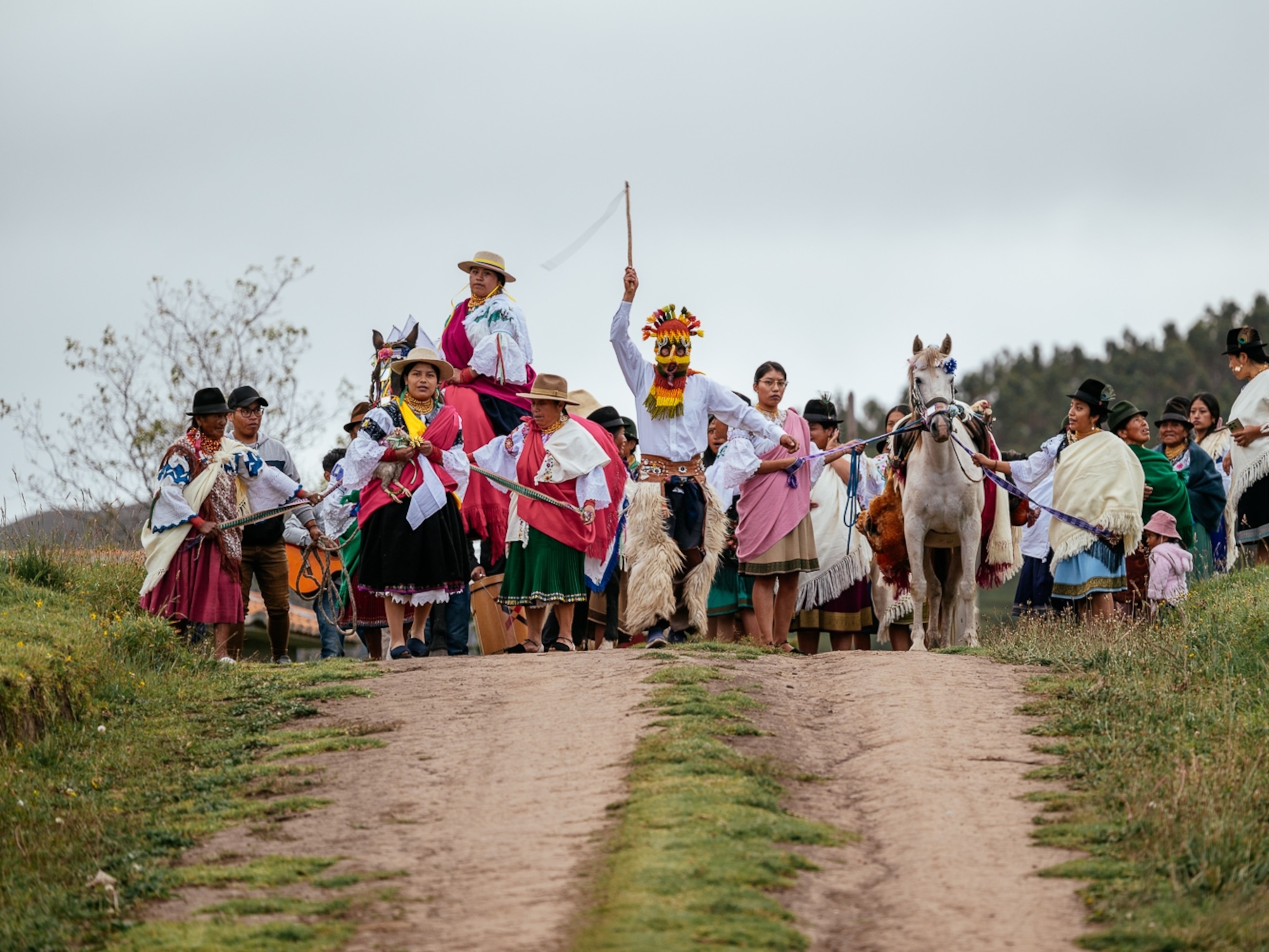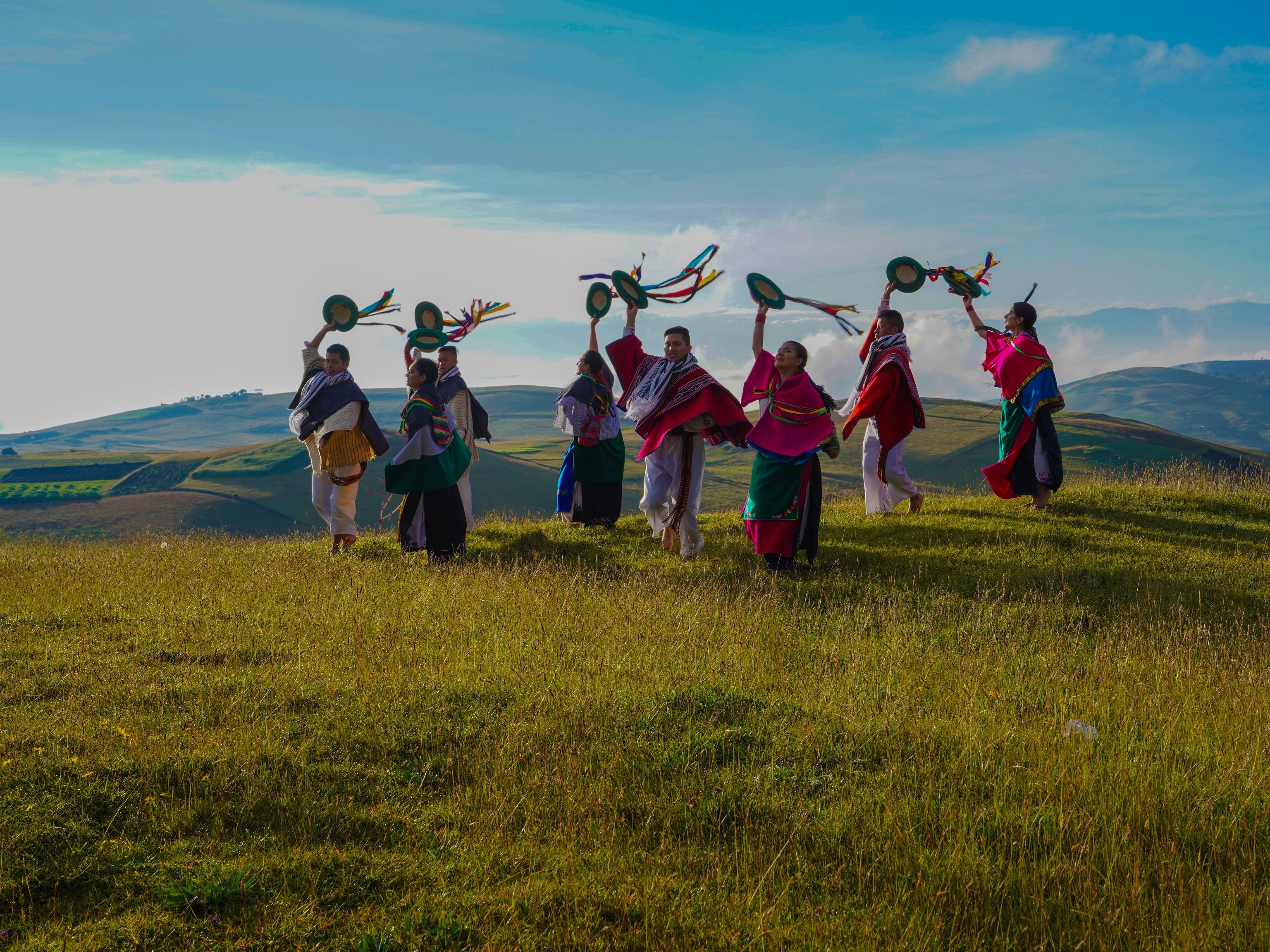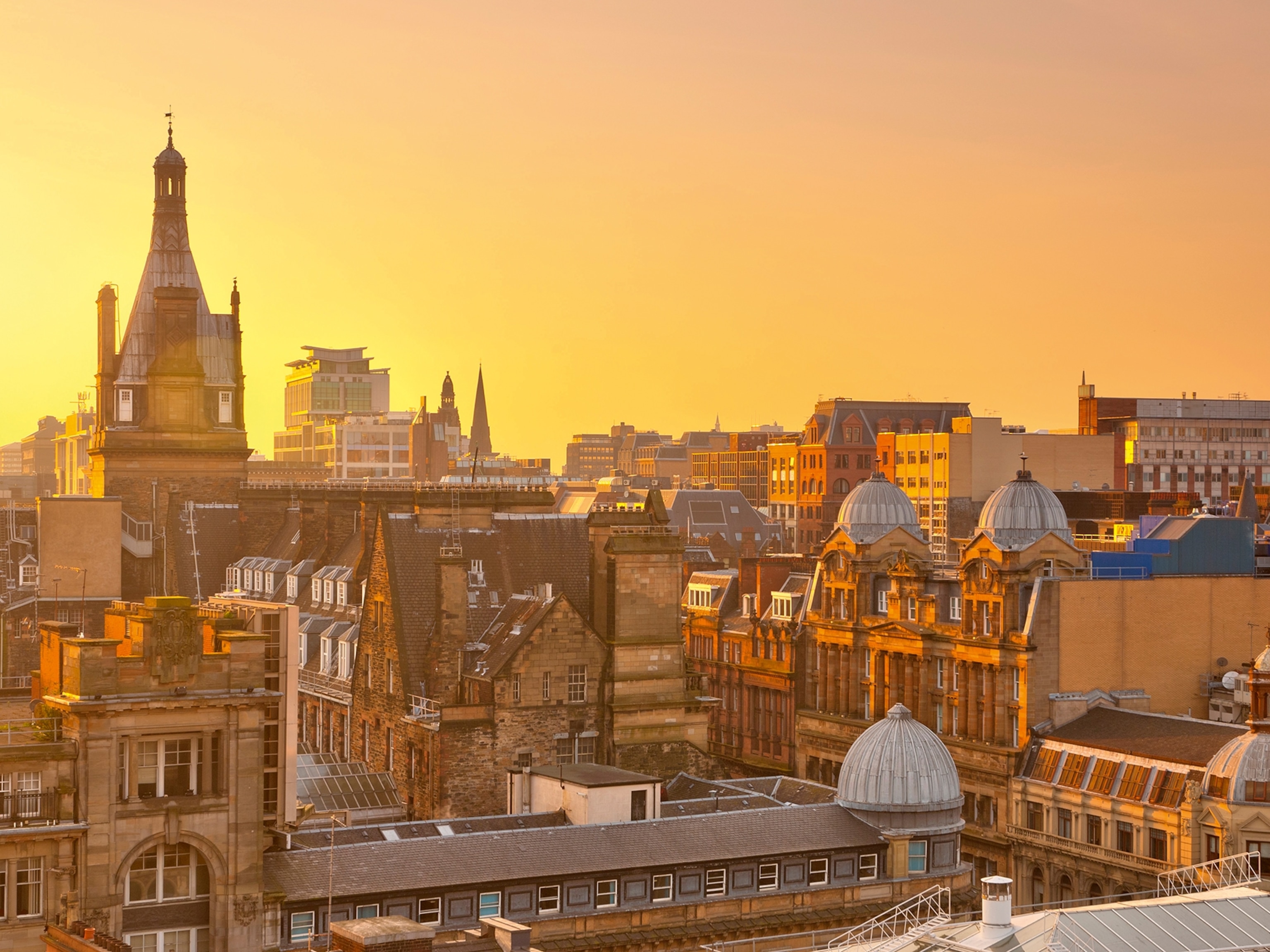A cultural exploration of Ecuador’s Angochagua communities
A glimpse into the country’s mountainous heart reveals the intertwining of culture and conservation. Experience the resilience and warmth of Ecuador’s Angochagua communities, stewards of its natural and cultural riches.
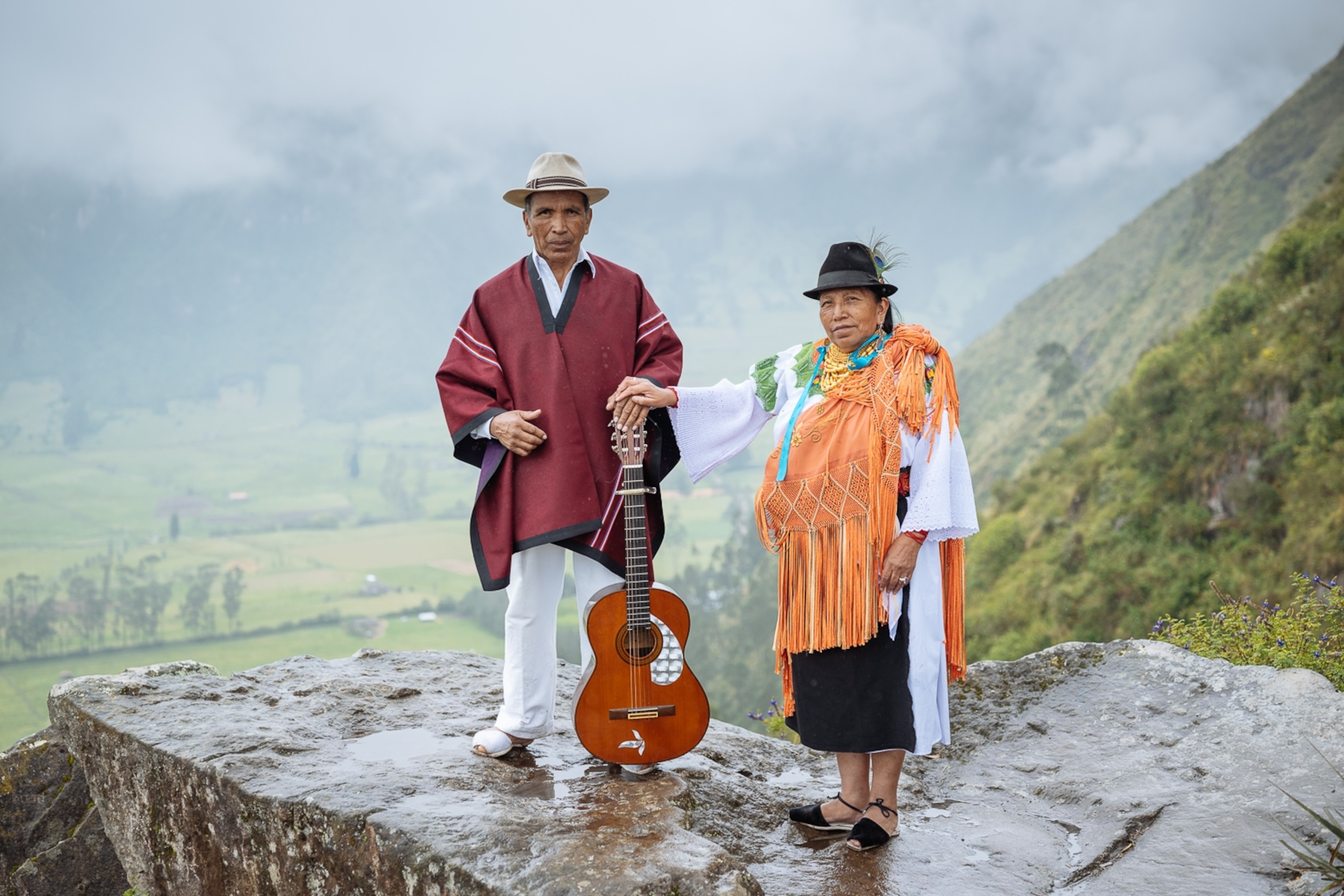
“Señora! Wait!”
I’m on the side of an Ecuadorian mountain and a woman in full Andean dress has just streaked past on a motorbike, her peacock-feather hat wrapped in a black bag against the rain.
The woman, named Mayra Perugachi, stops, turns and laughs at our team with our cameras and hopeful faces. She grins readily for her close-up, while smoothing her embroidered maroon skirt and adjusting her gold beaded necklace.
We follow her up the mountain, as we share the same destination: La Magdalena, a community within the parroquia (parish) of Angochagua, in Imbabura province. Communities across Angochagua offer visitors a glimpse into the lives of Indigenous Andean Kichwa people, including food, crafts and rituals.
“We do trekking, horse-riding, milking cows, wool combing,” says Tania Endara, community leader of La Magdalena, as she ushers us into La Casa de los Girasoles: a family home and tourism centre. “Each house tries to show their normal lives.”

On a woven tablecloth are jugs of blackberry juice and baskets of tortillas de tiesto, the fluffy corn tortillas that have been a staple here for centuries. “Everything has been made by our own hands since pre-Inca times,” says Tania. “We are proud of our culture.”
Proud though they may be, the Andean Kichwa culture is under threat from technology and globalisation. “Old people speak fully in Kichwa,” says Tania. “But the younger people speak in a mixture of Kichwa and Spanish, and the youngest fully in Spanish.” Tourism gives the Kichwa an economic incentive to maintain their traditions and language.
After breakfast, we drive further into the mountains to meet the community of Angochagua, which shares its name with the wider parish. We pull up and hike a short distance to a hilltop wreathed with cloud. As we arrive, we’re played in by the galloping rhythms of a cumbia band: guitar, accordion and a metal güiro with rasping ridges.
Community leader Milton Chuquin calls for hush as he begins a ritual to cleanse bad energy and remind those gathered what is truly important — a spiritual reset, so to speak. Scattered in a spiral before him are the natural riches of Ecuador: fruits, herbs and rose petals, plus a water-filled clay pot and a harmonica. “The spiral represents our lives and our needs,” he says. “We need food, water and air, yes — but we do not live just to breathe. We live to make.”
At this point, he picks up the harmonica and blows a solitary note. Even the birds seem to have fallen silent. “What is money, when you reach the end?” he cries. “What is money, if it has been made by exploiting the forests, by exploiting the Earth? Our responsibility is to serve the planet.”

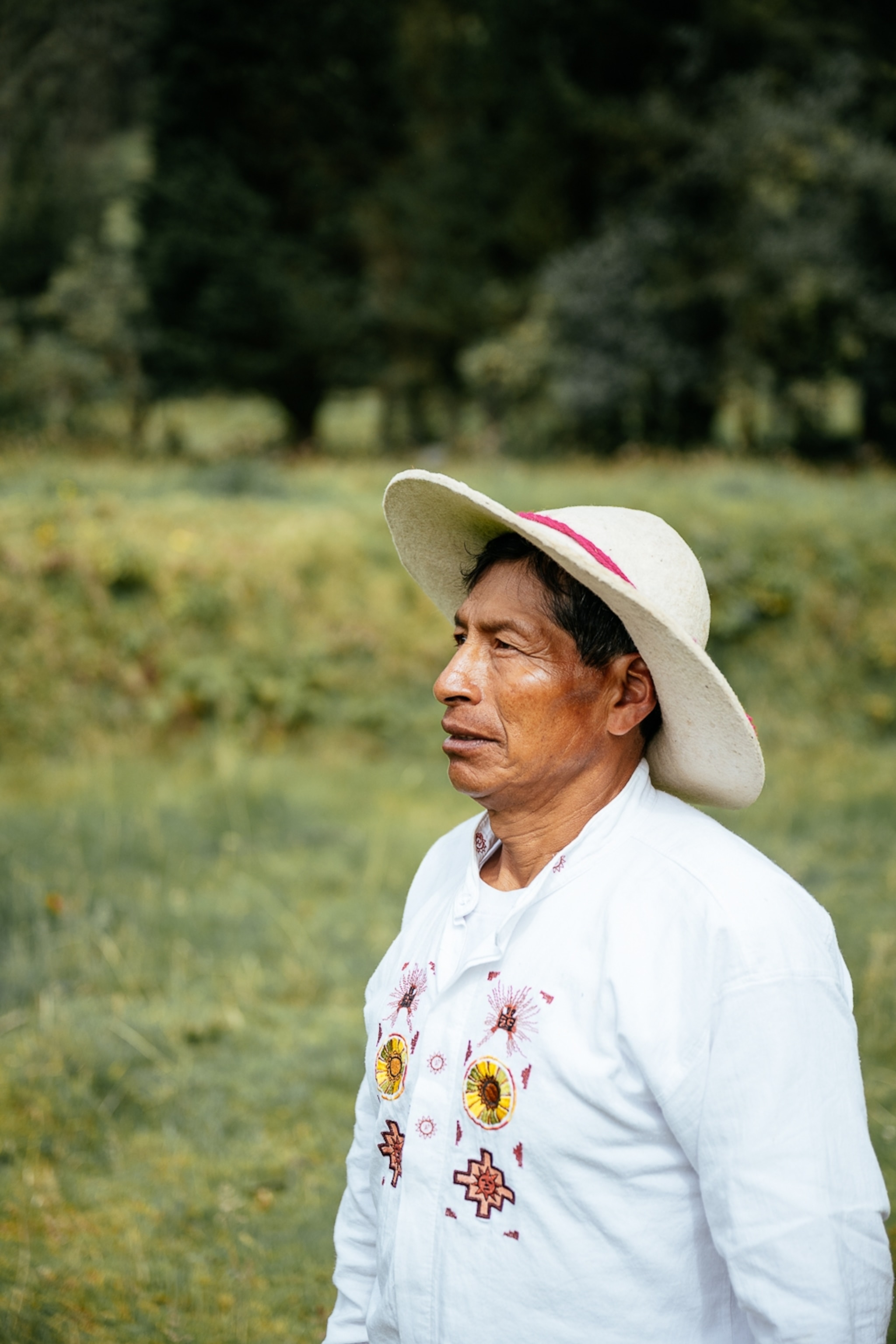
With the ritual over, the band strikes up again and the villagers dance around the spiral. “Really, we are just passengers on this Earth,” Milton says to me. “We want people to learn our ways so that they take greater care of our planet.”
We descend to the community of La Rinconada, known for its traditional ceramics. At the Allpa Manka studio, visitors learn how clay vessels are made, and can try making them themselves.
Craftsman David Guamán picks up a dull grey-coloured rock. “We take the clay from these mountains, just as we did centuries ago,” he says. He smashes it with a wooden stick, then sifts the granules through a metal pan, ready to be mixed with water.
I’ve been joined by José Alvear, Angochagua parish president. “You don’t see much plastic here,” he says, smiling, as David spreads out a leather hide, upon which he begins to knead the clay.
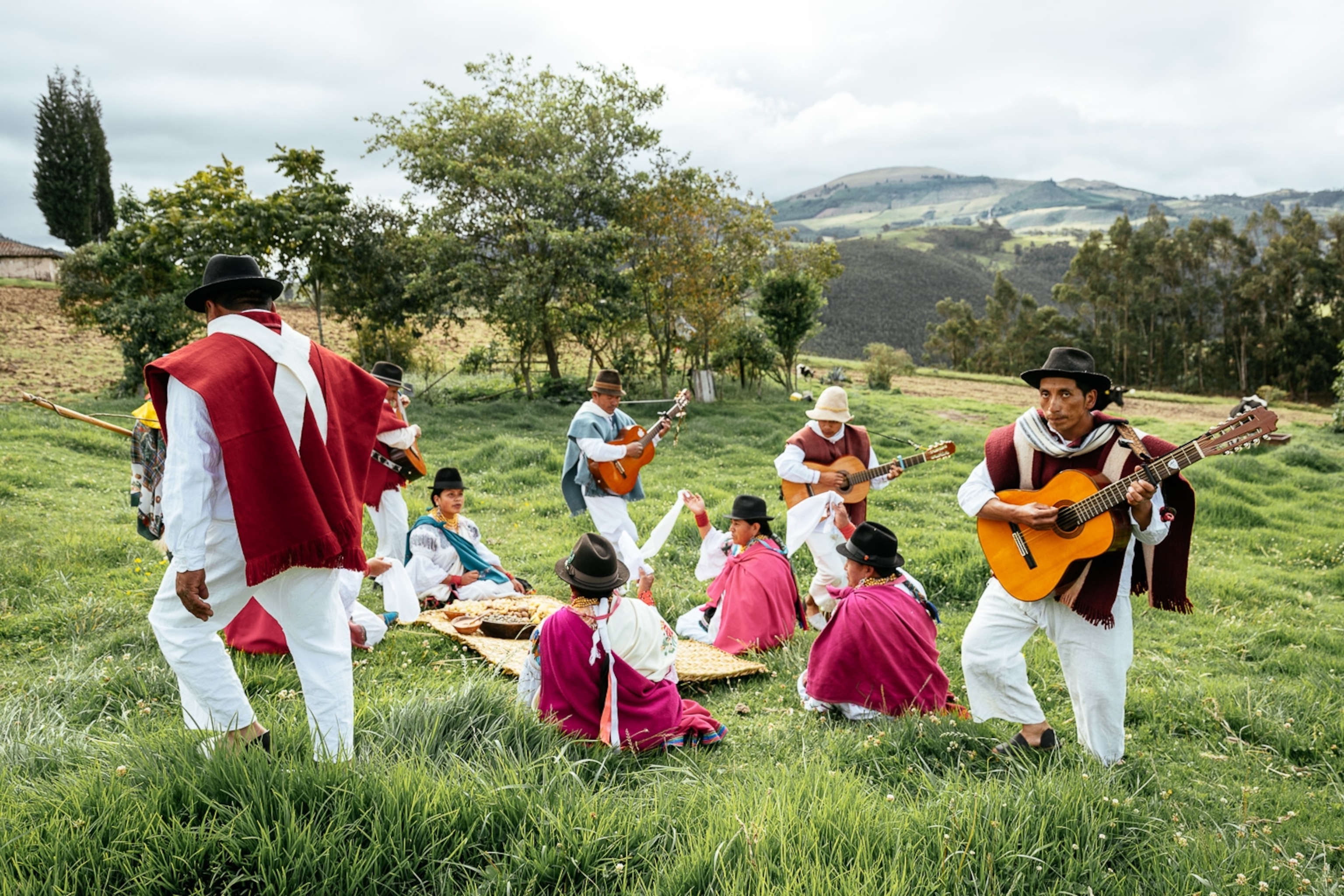
“Our goal is to maintain the legacy of our ancestors among young people,” José continues. “Tourism enhances our economy and allows us to show our culture and roots to the world.”
Of the various communities in Angochagua, perhaps the most documented is Zuleta. The Hacienda Zuleta estate is still partly owned by the Plaza Lasso family, which gave Ecuador two presidents; the latter, Galo Plaza Lasso, instituted land reforms that returned large tracts of land to Indigenous families. Indigenous Zuleteños are known for embroidery: they sell their wares locally and teach their skills to visitors at the hacienda (now a hotel).
At La Casa del Bordado, one of the many embroidery shops in the village of Zuleta, I meet Tania Bozmediano and Maria Chachalo, quietly sewing among a riot of floral handkerchiefs.
“Everything we do is according to the natural environment we have, the flowers and the mountains,” Tania tells me. “Every garment we make is unique; you will not find it anywhere else.”
“Around 45, 46 years: that’s how long this job has sustained me, my family, my children and their education,” adds Maria. “Not on a large scale, no. But on a level, at least, where we find that we don’t want for much.”
There are daily international flights to Ecuador’s capital Quito from Madrid, Amsterdam and US cities. Please follow FCDO guidelines when travelling around the country. For more information, visit ecuador.travel/en
To subscribe to National Geographic Traveller (UK) magazine click here. (Available in select countries only).
